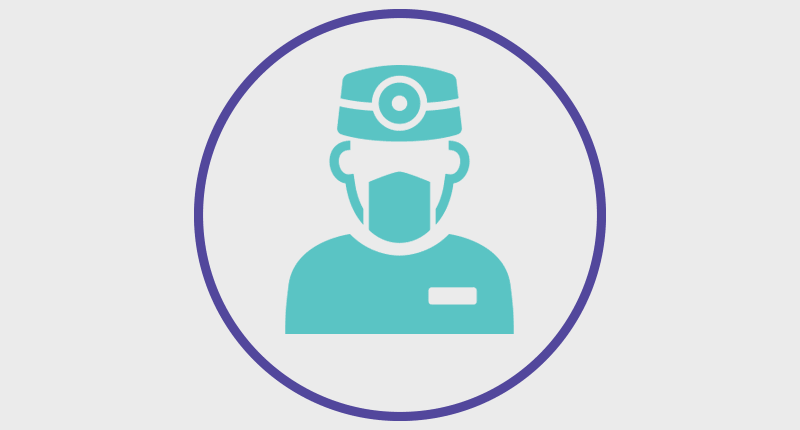Vasectomy Procedure
Vasectomy is a procedure which cuts the supply of sperm from the semen. This is done by closing off the tubes – the vas deferens – which convey the sperm from the testicles. Vasectomy derives from the ‘vas’ of vas deferens and ‘ectomy’ meaning the surgical removal of something or its function.
The vasectomy procedure has developed over the last forty years and our team has trained internationally to deliver the no scalpel, keyhole method. One of our team, Dr Killian Bates, is in fact the only doctor in Ireland to hold a Certificate of Special Skills Training for the provision of Vasectomy Services, conferred by the Faculty of Sexual and Reproductive Healthcare of the Royal College of Obstetricians and Gynaecologists (CCST FSRH).
Our team has selected the no scalpel, keyhole method because there is less damage caused to surrounding tissue. As a result, it produces the least discomfort to the patient and reduces downtime.
Most patients need only a local anaesthetic for the procedure, but should a patient prefer sedation, this can be arranged.
‘Keyhole’ painless vasectomy
This video explains the consent, procedure and consultation generally experienced by those who have chosen to move forward with a vasectomy with us. We are committed to making sure you are comfortable, informed and reassured throughout the process.
The Operation:
As the procedure’s name says, there is no slicing of the skin, but rather a 3-4mm circular hole is made in the scrotal skin. This keyhole is almost invisible after the procedure, requires no stitches and is very small when compared with the 10-15mm incision created by a scalpel during alternative methods.
The scrotum is entered via a scissor-like instrument - a haemostat – which is able to gently push away the tissue between skin and vas deferens. While no vasectomy-related instrument sounds particularly inviting, the haemostat significantly reduces the lacerations and bruising caused by alternative methods.
Once located, the vas is then gently lifted through the keyhole, sealed and reinstated to its previous position.
There are two tubes to be sealed and while it is generally possible to reach both through a single incision, some patients may need one incision on either side of the scrotum. Unfortunately, this cannot be confirmed until examination on the day of the procedure.
Duration:
Overall the procedure takes less than 25 minutes and we advise having someone drive you home to reduce the chance of post-operative complications.
Recovery:
Discomfort after the procedure is minimal. After the operation, there will likely be a little bruising and discomfort for up to three days. This usually resolves without treatment (similar to tooth filling or extraction) and paracetamol or ibuprofen will help.
Recovery is swift. Those with desk jobs and little physical strain find they can return to work almost immediately, and those with a more physically strenuous role may wish to take 2-3 days to recover. Many choose to have the operation on a Friday and take the weekend for recovery.
Providing support such as a jock strap is worn, running and non-contact sports can be resumed within 7 days, and contact sports within 14 days.
Normal sexual activity may resume within a similar time frame (14 days), once the keyhole site has healed. However, birth control precautions must still be used until a semen analysis shows there is no semen left in the ejaculate. This is usually around week ten, and after 20 ejaculations, so a semen analysis is taken 16 weeks after the vasectomy procedure.
Before this test, unprotected sex could result in an unexpected pregnancy, so precautions must be taken.
Rest: After the procedure, rest is prescribed. Office work can be resumed the next day.
It is important to avoid heavy lifting, heavy physical work, vigorous exercise and active sport for at least one week after the operation.
Depending on your occupation, it may be necessary to take 2-3 days off work.
This is not a reflection on the severity of the operation, but is instead due to the mobility of the scrotum. As a result it is subject to friction and needs rest to allow all the tissues and blood vessels to seal and heal.
Rest is important. If this advice is ignored complications such as bleeding, infection, pain and swelling are slightly more common.
Birth control required for 16 weeks:
Normal sexual activity may resume within 14 days however, the procedure is not confirmed effective for approximately three months. Birth control precautions must still be used until a semen analysis shows there is no semen left in the ejaculate. This is usually around week ten, and after 20 ejaculations, so a semen analysis is taken 16 weeks after the vasectomy procedure.
Before this test, unprotected sex could result in an unexpected pregnancy, so precautions must be taken.
Possible Complications:
As with any operation, occasional complications may occur and they include:
Wound infection or slow wound healing – both require treatment, so please contact us should this happen.
Bruised swelling - in about 1% of cases, blood will pool in the tissue around the testicle causing a Scrotal Haematoma (almost like a raised bruise). This may cause pain and swelling, most commonly in the first 2-3 days. It usually only happens when a patient hasn’t rested as directed. While significant haematomas occur in less than 0.1% of vasectomies, it is essential you contact us should swelling appear.
Epididymitis – this can be easily treated with an anti-inflammatory drug and happens when the epididymis (the tube which carries the sperm between the testicle and vas deferens) becomes inflamed.
Sperm Granuloma – this happens in up to 5% of vasectomy cases. These are small lumps which form at the end of the vas, particularly on the side still carrying sperm. These are harmless and usually do not cause any problems. However, if they become tender or painful it may be necessary to remove them surgically. This procedure can be done under local anaesthetic, but it is extremely rare.
Persistent pain - Very rarely men suffer from persistent pain in the testicle or at the vasectomy site which does not have an obvious cause. Treatment of this condition is difficult, as the reason for the pain is unknown, and most men suffering from this will be referred to a specialised urologist.
Sexual problems – any issues which emerge after a vasectomy operation should not necessarily be blamed on the vasectomy. We try to tease these issues out at first consultation because the majority of these have been present for some time, and once identified pre- vasectomy should then be addressed before proceeding.







